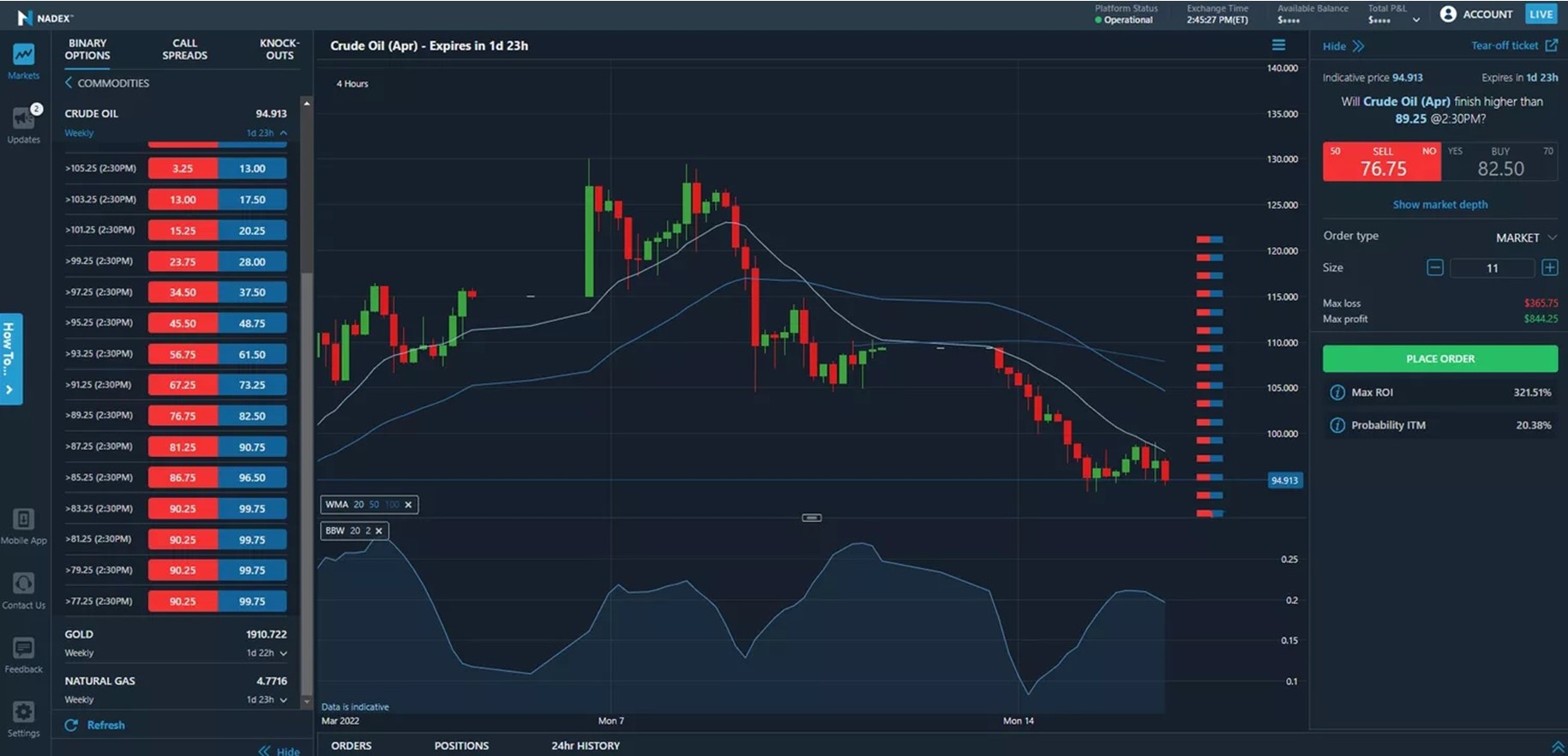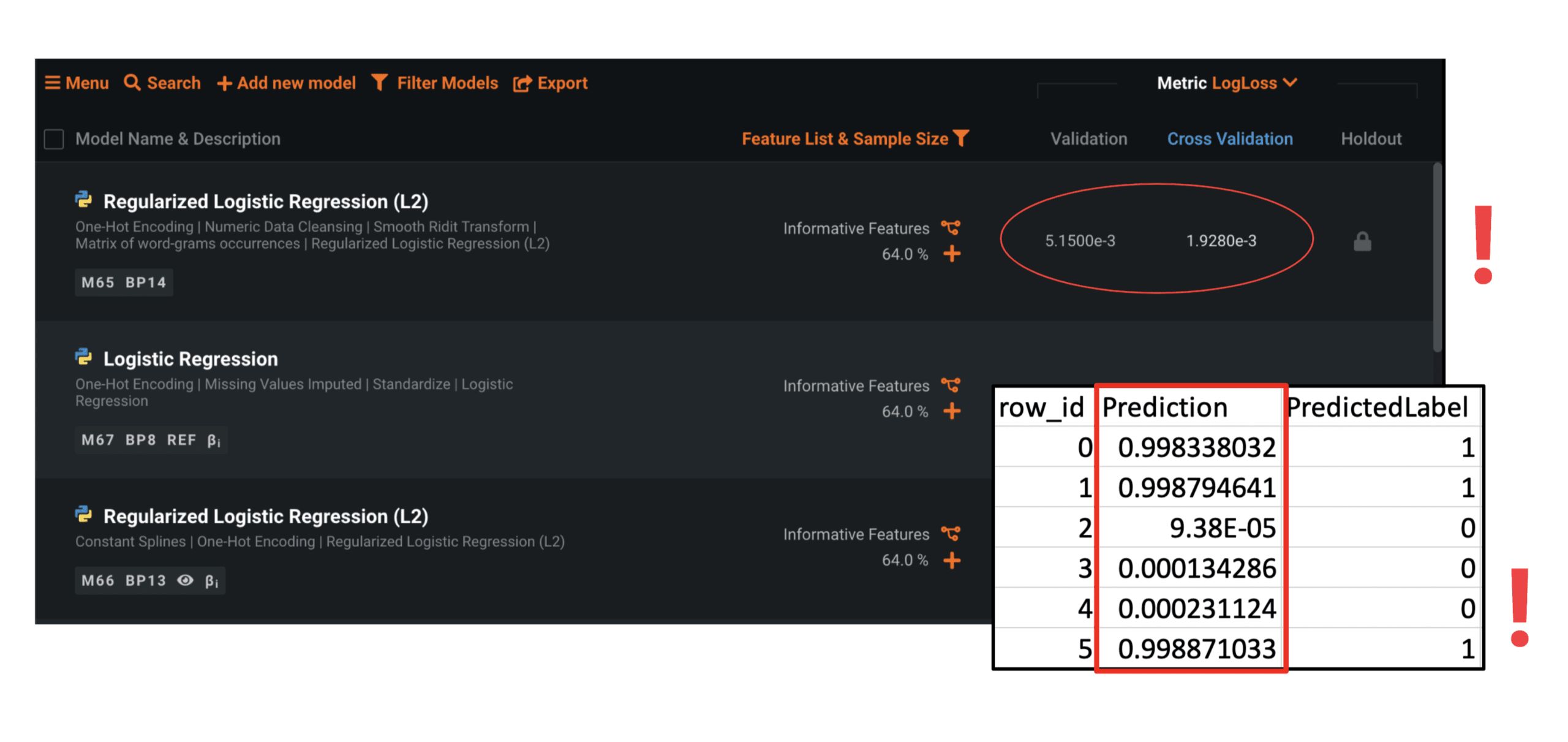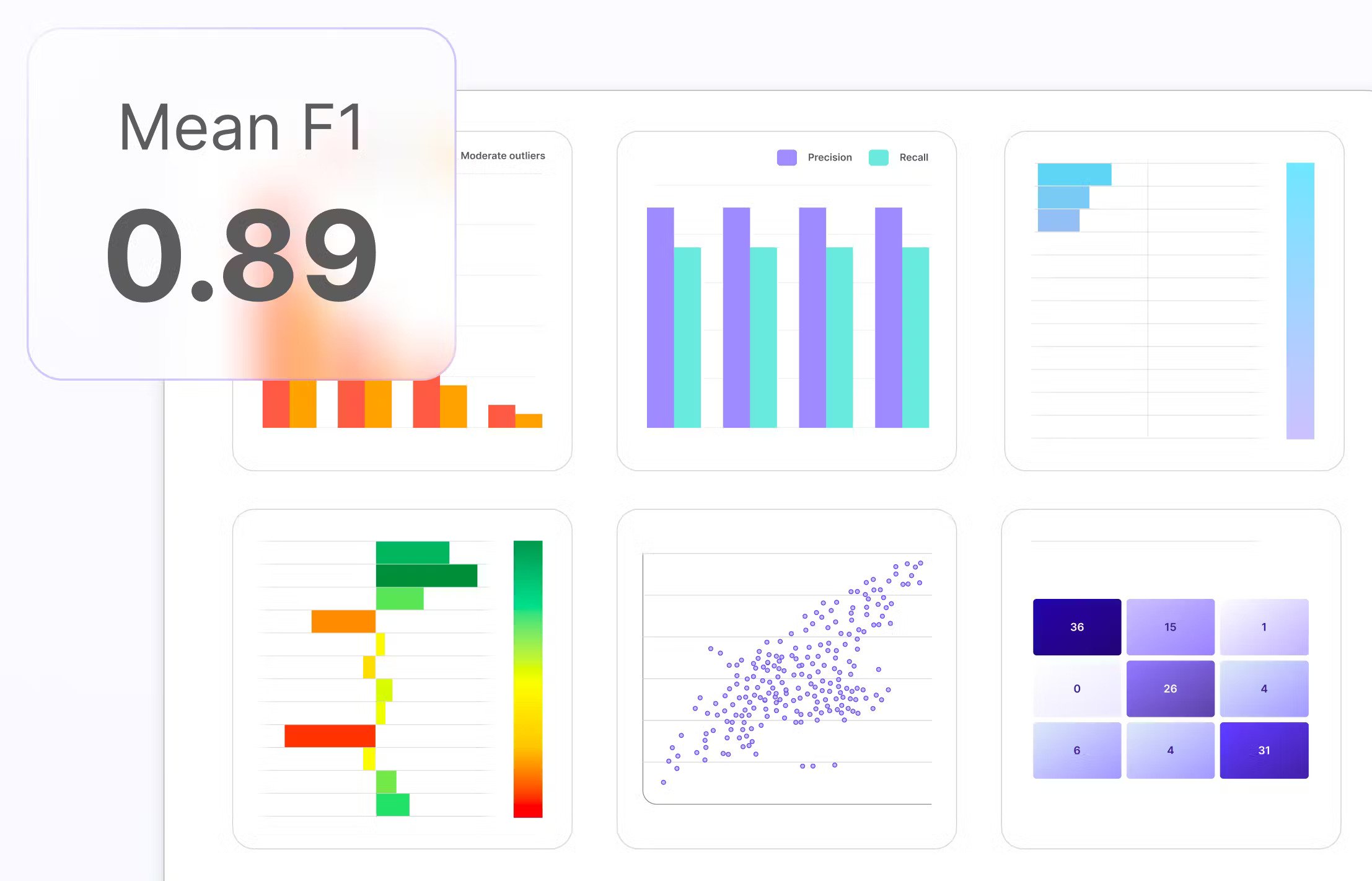Introduction
Welcome to the exciting world of binary options trading. If you are looking for a fast-paced and potentially lucrative investment opportunity, then binary options may be the perfect fit for you. This form of trading has gained popularity in recent years due to its simplicity and accessibility.
Binary options trading involves predicting whether the price of a particular asset, such as stocks, currencies, or commodities, will increase or decrease within a specified timeframe. The outcome is binary, hence the name “binary options.” You either win a predetermined payout if your prediction is correct, or you lose the investment amount if the prediction is incorrect.
This form of trading is particularly appealing to those who are new to the financial markets, as it does not require extensive knowledge or experience. With binary options, you don’t need to worry about the intricacies of buying and selling assets on the stock market. It offers a relatively straightforward way to profit from asset price movements.
Binary options trading operates on online platforms provided by brokers. These platforms offer a range of assets to trade, along with various expiration times and payout percentages. Traders have the flexibility to choose the assets that align with their trading preferences and risk tolerance.
However, it is important to note that binary options trading comes with its own set of risks. Due to the short-term nature of the trades and the potential for high returns, there is also a higher level of volatility and unpredictability. It is crucial to approach binary options trading with caution and have a clear understanding of the risks involved.
In this comprehensive guide, we will delve deeper into the world of binary options trading, exploring how it works, the different types of options available, the pros and cons, and strategies that can help maximize your chances of success. Keep reading to unlock the potential of binary options trading and embark on a thrilling investment journey.
What are Binary Options?
Binary options are a type of financial derivative that allows traders to speculate on the price movement of various assets. In simple terms, a binary option is a “yes or no” bet on whether the price of an asset will be above or below a certain level at a specified time.
When trading binary options, traders are presented with two possible outcomes: they can either win a fixed amount of money if their prediction is correct or lose their initial investment if their prediction is wrong. This simplicity is one of the key reasons why binary options have become increasingly popular among traders of all experience levels.
The underlying concept behind binary options is based on the principle of binary (two) outcomes. Unlike traditional options trading, where the potential profit or loss is unlimited, binary options provide a fixed payout or loss amount. This fixed payout structure allows traders to know the potential risk and reward before entering a trade, providing them with greater control over their investments.
Binary options can be traded on a wide range of assets, including stocks, currencies, commodities, and indices. Traders have the flexibility to choose the asset class that aligns with their trading knowledge and preferences.
There are two main types of binary options: call options and put options. A call option is purchased when a trader believes that the price of the underlying asset will rise above the strike price at expiration. On the other hand, a put option is bought when a trader predicts that the price of the underlying asset will fall below the strike price at expiration.
One of the key features of binary options is the predetermined expiration time. Traders must specify the duration of the option when entering a trade, which can range from minutes to hours, days, or even weeks. Once the expiration time is reached, the option either expires in-the-money, meaning the prediction was correct, or out-of-the-money, indicating an incorrect prediction.
Binary options provide traders with a simple and accessible way to participate in the financial markets. However, it is important to remember that trading binary options involves risk, and it is crucial to understand the market conditions, conduct thorough research, and use proper risk management strategies to enhance your chances of success.
How do Binary Options Work?
Binary options trading involves making predictions about the future price movement of an underlying asset within a specified time period. To understand how binary options work, let’s break down the process step by step.
1. Choose an Asset: Start by selecting the asset you want to trade. This can include stocks, currencies, commodities, or indices. Consider factors such as market trends, news events, and your own knowledge of the asset to make an informed decision.
2. Choose the Direction: Decide whether you think the price of the asset will go up or down within a given timeframe. If you believe the price will rise, you select a “Call” option. If you think the price will fall, you choose a “Put” option.
3. Set the Expiry Time: Determine the duration of the trade, known as the expiry time. This can range from a few minutes to several hours or even days. Different binary options brokers offer various expiry options to choose from.
4. Place the Trade: Enter the trade by selecting the desired investment amount and clicking on the appropriate option (Call or Put) in the trading platform. The platform will display the potential payout and the potential loss for the trade.
5. Wait for the Expiration: Once the trade is placed, you need to wait for the predetermined expiry time to pass. During this time, the price of the asset will either move in your predicted direction (in-the-money) or against your prediction (out-of-the-money).
6. Outcome and Payout: At the expiry time, the trade will either be deemed successful or unsuccessful based on whether your prediction was correct or not. If the trade ends in-the-money, you will receive a predetermined payout, typically ranging from 70% to 90%. If it ends out-of-the-money, you will lose your invested amount.
Binary options trading platforms also offer features like early closure, rollover, and double up, which provide additional flexibility and control over your trades. Early closure allows you to exit a trade before the expiration time, while rollover extends the expiry time to give the trade more time to move in your favor. Double up allows you to duplicate an existing trade with the same conditions.
It is essential to note that the potential profit and loss are fixed and known before entering a trade. This means that even if the market moves significantly in your favor, your profit will be limited to the predetermined payout. Similarly, if the market moves against you, your loss will be limited to the initial investment amount.
By understanding how binary options work, you can develop effective trading strategies and manage your risk accordingly.
Types of Binary Options
Binary options offer a variety of trading options to suit the preferences and strategies of different traders. Understanding the different types of binary options can help you make informed decisions and maximize your trading opportunities. Let’s explore some of the most common types:
1. High/Low Options: Also known as Call/Put options, this is the most basic and traditional type of binary option. Traders predict whether the price of an asset will be higher or lower than the current price at the time of expiration. If the prediction is correct, the trader receives a fixed payout. High/Low options are widely available for various assets and timeframes.
2. One Touch Options: With One Touch options, traders predict whether the price of an asset will touch a specific target price before the expiry time. These options offer higher potential payouts as they require the asset price to achieve a specific level, but they also carry higher risk. If the target price is reached at any point before expiration, the option is considered successful, regardless of whether the price stays at that level.
3. Range Options: Range options, also called Boundary options, involve predicting whether the price of an asset will remain within a specified range or break out of it by the expiration time. Traders need to determine if the price will stay between two predetermined levels or move beyond them. Range options can be an effective choice in stable or consolidating markets.
4. Short-Term Options: Short-term binary options have extremely short expiration times, ranging from 30 seconds to a few minutes. These options allow traders to take advantage of quick price movements in the market. Short-term options require swift decision-making and are more suited for experienced traders who can analyze market trends effectively.
5. Long-Term Options: Long-term binary options have longer expiration times, typically ranging from a few hours to several days or even weeks. This type of option is suitable for traders who prefer a more extended time horizon and want to capitalize on significant market trends. Long-term options provide more flexibility and time for trades to develop.
6. Pairs Options: Pairs options involve trading on the relative performance of two assets within a specified period. Traders need to predict which asset will outperform the other by the expiry time. Pairs options can be an effective way to diversify a trading strategy and take advantage of correlations between assets.
It’s important to note that not all binary options brokers offer the same range of options. Some brokers specialize in specific types, while others offer a broader selection. As a trader, it’s crucial to choose a broker that offers the types of options that align with your trading style and preferences.
By understanding the different types of binary options, you can explore various trading strategies and select the ones that best suit your goals and risk appetite. Remember to conduct thorough research and practice proper risk management to enhance your chances of success.
Pros and Cons of Binary Options Trading
Binary options trading offers unique advantages and disadvantages that traders should consider before engaging in this form of investment. Understanding the pros and cons can help you make informed decisions and manage your trading effectively. Let’s explore the benefits and drawbacks:
Pros:
- Accessibility: Binary options trading is relatively easy to understand and accessible to traders of all experience levels. You don’t need extensive financial knowledge or complex trading strategies to get started.
- Defined Risk and Reward: One of the key advantages of binary options is that you know the potential risk and reward before entering a trade. This fixed payout structure allows for better risk management.
- Short-Term Trading Opportunities: Binary options offer short expiry times, allowing traders to profit from quick price movements in the market. This can provide opportunities for frequent trading and potential high returns.
- Diverse Asset Classes: Binary options provide a range of assets to trade, including stocks, currencies, commodities, and indices. This allows for portfolio diversification and flexibility to trade in different markets.
- No Ownership of Assets: Unlike traditional investing, binary options trading does not require owning the underlying assets. Traders can profit from price movements without actually purchasing the assets.
Cons:
- High Volatility: Binary options trading can be highly volatile, with rapid price movements and unpredictable market conditions. This volatility can lead to significant gains or losses, making it important to manage risk carefully.
- Fixed Profit: The fixed payout structure of binary options means that the potential profit is limited. Even if the market moves significantly in your favor, your profit will be capped at the predetermined payout.
- Limited Regulation: The binary options market has faced challenges with regards to regulations. There have been instances of scams and unregulated brokers, so it’s crucial to choose a reputable and licensed broker.
- Emotional Impact: The fast-paced nature of binary options trading can lead to emotional decision-making and impulsive trades. It is essential to have a disciplined approach and stick to a well-thought-out trading plan.
- Market Manipulation: As with any financial market, there is always a risk of market manipulation. In binary options trading, the price and outcome of trades can be influenced by various factors, including the actions of brokers and market makers.
It is important to weigh the pros and cons of binary options trading and evaluate them against your own financial goals and risk appetite. With proper research, effective risk management, and a disciplined approach, you can navigate the binary options market and potentially profit from its unique characteristics.
Binary Options vs. Traditional Options
When it comes to options trading, there are two primary types: binary options and traditional options. While both offer opportunities for traders to profit from price movements in the financial markets, they differ in several key aspects. Let’s compare binary options and traditional options to understand their differences:
Binary Options:
Binary options are all-or-nothing options with predetermined payouts and fixed expiry times. Here are some key characteristics of binary options:
- Payout Structure: Binary options offer a fixed payout if the trade ends in-the-money, typically ranging from 70% to 90%. This means that regardless of how far the price moves in your favor, your profit remains limited.
- Flexibility: Binary options provide traders with various asset classes to trade, including stocks, currencies, commodities, and indices. Traders can choose the assets that they are most familiar with or interested in.
- Expiry Times: Binary options have short expiry times, typically ranging from a few minutes to hours. This makes them suitable for traders who prefer quick trading opportunities and results.
- Price Direction: To profit from binary options, traders need to predict whether the price of an asset will be above or below a certain level at expiry. They do not need to worry about the actual magnitude of the price movement.
Traditional Options:
Traditional options, also known as plain vanilla options, are more complex instruments traded on regulated exchanges. Here are some key characteristics of traditional options:
- Payout Structure: Traditional options offer unlimited profit potential if the trade moves in your favor. The profit is determined by the degree to which the price of the underlying asset exceeds the strike price.
- Flexibility: Traditional options provide traders with a range of strategies, including buying or selling calls or puts, and using various options trading techniques such as spreads, straddles, or collars. These strategies offer more flexibility in managing risk and generating profits.
- Expiry Times: Traditional options have longer expiry times, ranging from days to months or even years. This allows traders to take a longer-term view on the market and benefit from sustained price movements.
- Price Direction and Magnitude: Traders of traditional options need to predict both the direction and relative magnitude of the price movement. This requires a deeper understanding of market dynamics and the factors influencing the asset’s price.
While both binary options and traditional options provide opportunities for traders, it’s important to consider your trading style, risk tolerance, and market knowledge when choosing between the two. Binary options offer a simplified and accessible approach, ideal for beginners or those who prefer shorter-term trading. On the other hand, traditional options offer more complexity and flexibility, suited for experienced traders who are comfortable with advanced options strategies and longer time horizons.
Ultimately, the choice between binary options and traditional options depends on your individual preferences and trading objectives. It’s important to conduct thorough research and understand the characteristics of each option type before deciding which one aligns best with your trading goals.
Understanding Binary Options Brokers
Binary options brokers play a vital role in facilitating binary options trading. They provide the platforms and services that enable traders to enter into binary options trades. Understanding how binary options brokers operate and the factors to consider when choosing one is crucial for a successful trading experience. Here are the key aspects to understand:
Regulation and Licensing: It is important to choose a binary options broker that is regulated and licensed by a reputable financial authority. Regulation helps ensure that the broker operates in a fair and transparent manner, and that client funds are protected. Regulated brokers are subject to strict guidelines and oversight, which enhances the level of trust and confidence in the trading process.
Asset Offering: Different brokers may offer a diverse range of assets for trading. It is essential to choose a broker that provides a wide selection of assets, including stocks, currencies, commodities, and indices. A broader range of assets provides more trading opportunities and allows for diversification.
Trading Platforms: The trading platform provided by the broker is the interface through which traders execute their trades. It is important to choose a broker that offers a user-friendly and intuitive platform with features and tools that cater to your trading needs. This includes real-time price charts, technical analysis indicators, and order execution functions.
Payout and Return Rates: Each broker may have different payout percentages for winning trades. It is important to compare the payout rates offered by different brokers to maximize your potential profits. Higher payout rates mean more significant returns on successful trades.
Customer Support: Reliable customer support is crucial in the world of binary options trading. Look for brokers that provide responsive and professional customer support, preferably with multiple channels of communication such as phone, email, and live chat. Good customer support ensures that any issues or inquiries are promptly addressed.
Deposit and Withdrawal Methods: Consider the deposit and withdrawal options provided by the broker. Look for brokers that offer a variety of secure and convenient payment methods, including bank transfers, credit cards, and e-wallets. Quick and efficient withdrawal processes are crucial for accessing your funds in a timely manner.
Educational Resources: Some brokers offer educational resources such as tutorials, webinars, and trading guides to help traders improve their skills and knowledge. Consider brokers that provide educational materials to enhance your understanding of binary options trading and develop effective trading strategies.
Reputation and Reviews: Research and read reviews about different brokers to gauge their reputation and the experiences of other traders. Look for brokers with positive feedback and a track record of reliability, transparency, and professionalism.
By understanding these aspects and carefully evaluating different brokers based on your trading requirements and preferences, you can choose a reputable and reliable binary options broker. A trusted broker is a crucial partner in your trading journey, providing the necessary tools and support to maximize your potential for success.
How to Choose the Right Binary Options Broker
Choosing the right binary options broker is a critical decision that can significantly impact your trading experience and success. With numerous brokers available in the market, it is essential to consider certain factors to ensure you select a trustworthy and reliable broker. Here are some key factors to consider when choosing a binary options broker:
Regulation and Licensing: Select a broker that is regulated and licensed by a reputable financial authority. Regulation ensures the broker operates with transparency, follows strict guidelines, and safeguards client funds.
Asset Offering: Assess the range of assets available for trading. Look for brokers that provide a diverse selection across different asset classes, such as stocks, currencies, commodities, and indices. A wide range of assets allows for greater trading opportunities and portfolio diversification.
Trading Platform: Evaluate the trading platform offered by the broker. Choose a platform that is user-friendly, intuitive, and provides the necessary features and tools for effective trading. Look for real-time price charts, technical analysis indicators, and smooth order execution.
Payout and Return Rates: Compare the payout percentages offered by different brokers. Higher payout rates mean higher potential returns on successful trades. Select a broker that offers competitive payout rates to maximize your profitability.
Customer Support: Consider the customer support provided by the broker. Responsive and professional customer support is essential to address any queries or issues that may arise during your trading journey. Look for brokers that offer prompt and helpful support through various channels of communication.
Deposit and Withdrawal Methods: Assess the deposit and withdrawal options provided by the broker. Look for brokers that offer a variety of secure and convenient payment methods, ensuring easy funding of your trading account and hassle-free withdrawals when needed.
Educational Resources: Consider if the broker provides educational resources such as tutorials, webinars, or trading guides. These resources can be valuable for traders to enhance their knowledge, develop trading strategies, and stay updated with market trends.
Reputation and Reviews: Research and read reviews about different brokers to gauge their reputation and credibility. Pay attention to feedback from other traders, taking into account factors such as reliability, transparency, and professionalism.
Demo Account: Check if the broker offers a demo account. A demo account allows you to practice trading with virtual money before committing real funds. It is an excellent way to familiarize yourself with the broker’s platform and test your trading strategies.
By thoroughly evaluating brokers based on these factors, you can make an informed decision and choose the right binary options broker for your trading needs. Remember, your broker is your partner in trading, so it is essential to select a trustworthy and reliable one to ensure a smooth and successful trading experience.
Tips for Successful Binary Options Trading
Binary options trading can be an exciting and potentially lucrative investment opportunity. To improve your chances of success in this form of trading, consider the following tips:
1. Educate Yourself: Take the time to learn about binary options trading. Understand the basics, terminology, and various strategies that can help you make informed trading decisions. Stay updated with market news and trends to identify potential opportunities.
2. Choose the Right Broker: Select a reputable and regulated binary options broker. Evaluate factors such as regulation, asset offering, trading platform, payout rates, customer support, and educational resources. A reliable broker can enhance your trading experience and provide a secure trading environment.
3. Develop a Trading Plan: Create a well-defined trading plan that includes your risk tolerance, trading goals, and a strategy for entering and exiting trades. Stick to your plan and avoid impulsive trading decisions based on emotions or market rumors.
4. Practice with a Demo Account: Most brokers offer demo accounts where you can practice trading using virtual money. Utilize the demo account to familiarize yourself with the platform, test different strategies, and gain confidence before trading with real money.
5. Start with Small Investments: Begin with smaller investment amounts, especially if you are new to binary options trading. Gradually increase your investment size as you gain experience and confidence in your trading abilities.
6. Choose Your Assets Wisely: Focus on assets that you understand and have knowledge about. It is easier to analyze and predict price movements when you are familiar with the underlying asset. Specializing in a few assets can help you develop expertise and improve your trading accuracy.
7. Implement Risk Management Strategies: Use proper risk management techniques to protect your capital. Set specific limits for the amount you are willing to risk on each trade, and avoid overexposing yourself to high-risk trades. Consider using stop-loss orders or hedging strategies to manage potential losses.
8. Analyze Market Trends and Patterns: Utilize technical analysis tools and indicators to identify market trends, support, and resistance levels, and possible price patterns. This analysis can help you make more informed trading decisions and identify profitable entry and exit points.
9. Diversify Your Trading Portfolio: Avoid putting all your eggs in one basket. Diversify your trades across different assets, industries, or market conditions to reduce the impact of a single trade on your overall trading performance.
10. Learn from Your Trades: Analyze your trading performance regularly. Review both your winning and losing trades to identify patterns, strengths, and weaknesses in your trading strategy. Continuous learning and improvement are critical for long-term success in binary options trading.
Keep in mind that successful trading requires patience, discipline, and ongoing learning. With practice, proper risk management, and a strategic approach, you can increase your chances of achieving consistent profitability in binary options trading.
Common Binary Options Trading Strategies
Developing a solid trading strategy is crucial for success in binary options trading. Here are some common strategies that traders often employ:
1. Trend Following: This strategy involves identifying and following the prevailing market trend. Traders look for assets that are showing a consistent upward or downward movement and place trades in the direction of the trend. The key is to enter trades when the asset is likely to continue in its current trend.
2. Support and Resistance: Support and resistance levels are areas where the price of an asset tends to stall or reverse. Traders use this strategy by placing Call options near support levels and Put options near resistance levels. The goal is to capture price bounces or breakouts from these key levels.
3. Breakout Strategy: Breakout trading involves identifying price levels where the asset is consolidating within a narrow range and anticipating a breakout. Traders place Call options if the price breaks above resistance or Put options if the price breaks below support. The aim is to capitalize on strong momentum moves once the breakout occurs.
4. Reversal Strategy: The reversal strategy is based on the theory that prices cannot move in one direction indefinitely. Traders look for signs of trend fatigue or market extremes and place trades in the opposite direction. This strategy requires careful analysis of price patterns and indicators to identify potential reversals.
5. Range Trading: Range trading involves identifying price ranges in which an asset has been trading between support and resistance levels. Traders place Call options when the price is near support and Put options when the price is near resistance. The goal is to profit from the price oscillations within the range.
6. News-Based Strategy: This strategy involves trading binary options based on market-moving news events. Traders closely monitor economic indicators, corporate earnings reports, or geopolitical news that can impact asset prices. News-based trading requires quick decision-making and careful analysis of how the news will affect the market.
7. Martingale Strategy: The Martingale strategy is a high-risk strategy that involves doubling the investment amount after a losing trade. The idea is to eventually recoup the losses when a winning trade occurs. Traders need to be cautious when employing this strategy as it can lead to significant losses if not managed properly.
8. Fundamental Analysis: Fundamental analysis focuses on analyzing economic indicators, company financials, and market conditions to determine the intrinsic value of an asset. Traders use this strategy to identify undervalued or overvalued assets, placing trades based on their fundamental outlook.
9. Technical Analysis: Technical analysis involves studying historical price charts, patterns, and indicators to predict future price movements. Traders use tools such as moving averages, trend lines, and oscillators to identify entry and exit points. Technical analysis can be used in combination with other strategies to enhance trading decisions.
10. Hedging: Hedging is a risk management strategy that involves placing multiple trades to offset potential losses. Traders can hedge their positions by placing opposing trades on the same asset or diversifying their trades across different assets. Hedging can help protect against market volatility and minimize risk exposure.
It’s important to note that no strategy guarantees consistent profits, and each strategy has its own risks and limitations. Traders should evaluate their risk tolerance, market conditions, and timeframes to determine which strategies are suitable for their trading goals. It is also recommended to backtest and practice strategies on a demo account before using them in real trading conditions.
Risks and Precautions in Binary Options Trading
While binary options trading can offer significant opportunities for profit, it also comes with its fair share of risks. Understanding and managing these risks is crucial for a successful trading journey. Here are some of the risks involved in binary options trading and precautions to consider:
1. Market Volatility: Binary options trading is highly sensitive to market volatility. Rapid price movements can result in significant gains or losses within a short period. It is important to be aware of market conditions and adjust your trading strategy accordingly. Consider using risk management techniques, such as setting stop-loss orders or limiting the investment amount per trade, to protect against volatile market conditions.
2. Lack of Regulation: The binary options market is relatively less regulated compared to other financial markets. This may expose traders to unscrupulous brokers or fraudulent activities. To mitigate this risk, choose a regulated and licensed broker that adheres to strict regulatory standards. Research the broker’s reputation, read reviews, and ensure they have a transparent and secure trading environment.
3. Overtrading and Emotional Decision-Making: Overtrading can occur when traders enter into excessive trades based on impulse or emotional reactions. It is crucial to stick to a well-defined trading plan and avoid making impulsive decisions driven by fear or greed. Take breaks from trading, maintain a calm mindset, and practice self-discipline to prevent emotional decision-making.
4. Uncertain Market Predictions: Predicting future market movements accurately is challenging, even for experienced traders. There are numerous factors influencing asset prices, including economic indicators, geopolitical events, and market sentiment. Do thorough research, use technical analysis tools, and stay updated with relevant news to make more informed trading decisions. However, understand that there is always an element of uncertainty in financial markets.
5. Limited Profit Potential: Binary options offer predefined payouts based on correct predictions. The profit potential is limited, and traders cannot capture additional profits if the asset surpasses the predicted price level. Understand the potential payout structure and manage your expectations accordingly. Consider other forms of trading, such as traditional options or forex, if you seek more extensive profit potential.
6. Loss of Investment Capital: Binary options trading involves the risk of losing your entire investment capital if trades end out-of-the-money. It is essential to only invest money that you can afford to lose. Start with small investment amounts and gradually increase them as you gain experience and confidence in your trading abilities. Implement proper risk management techniques to protect against significant losses.
7. Incomplete Market Information: Traders may face challenges due to incomplete or inaccurate market information. Ensure you have access to reliable data sources, use reputable trading platforms, and verify information from multiple sources before making trading decisions. Relying on unreliable or unsubstantiated information can lead to poor trading outcomes.
8. Lack of Strategy or Analysis: Trading without a well-defined strategy or analysis increases the risk of making random and uninformed trades. Develop a trading plan, conduct proper technical and fundamental analysis, and choose appropriate trading strategies suitable for the market conditions. Regularly evaluate your trading performance and make adjustments as needed.
Remember, risk is inherent in any form of trading. By understanding the risks involved in binary options trading and taking necessary precautions, you can better protect yourself and improve your chances of success. Ongoing learning, disciplined trading, and responsible risk management are key to navigating the binary options market effectively.
Conclusion
Binary options trading can be an exciting and potentially profitable investment opportunity, but it also comes with its fair share of risks. By understanding the fundamentals of binary options, choosing a reputable broker, and implementing effective trading strategies, you can enhance your chances of success.
Through this comprehensive guide, we have explored various aspects of binary options trading, including what binary options are, how they work, different types of options, and the pros and cons of this form of trading. We have also discussed the importance of understanding binary options brokers, tips for successful trading, common trading strategies, and risks and precautions to consider.
It is crucial to approach binary options trading with a disciplined mindset, proper risk management, and continuous learning. Develop a trading plan that aligns with your goals and risk tolerance, and stick to it. Practice with a demo account before trading with real money and continuously evaluate and improve your trading strategies.
Remember that success in binary options trading does not guarantee guaranteed profits, and losses are an inherent part of trading. It is important to trade responsibly, only invest what you can afford to lose, and be prepared for potential fluctuations in the market.
As with any form of investment, continuous education and staying updated with market trends are key to staying ahead and making informed trading decisions. Stay abreast of economic indicators, market news, and relevant analysis to adapt your trading strategy accordingly.
Binary options trading can offer exciting opportunities for traders looking to capitalize on short-term price movements in various assets. With the right knowledge, skills, and strategies, you can navigate the complexities of this market and potentially achieve success in your trading endeavors.

























